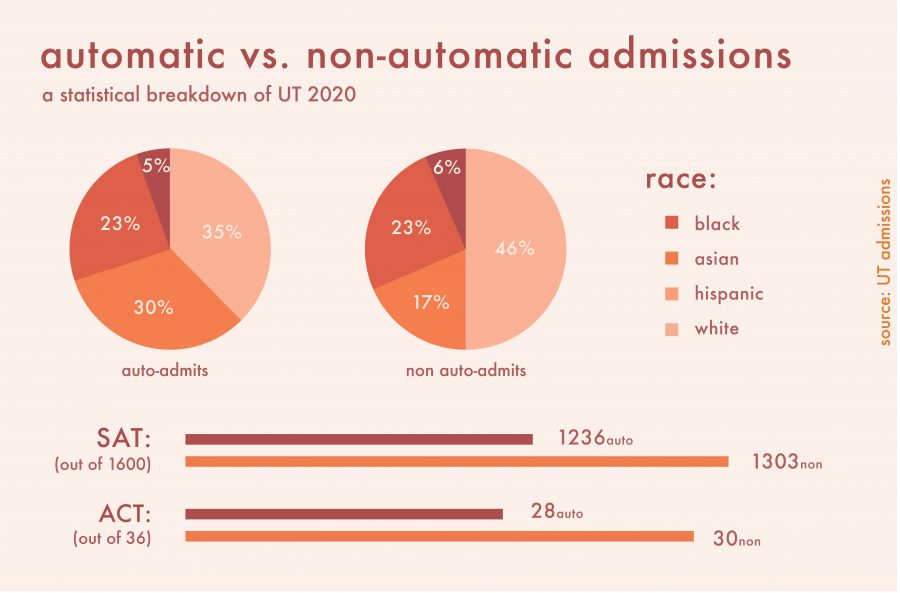Applying to UT as an out-of-state student, it felt like the odds were stacked against me. This feeling came because of the top 10 percent rule, and the fact that those automatic admittees account for 75 percent of incoming freshman to UT. Now a Senate committee is considering getting rid of the top 10 percent rule and freeing UT from the restrictions it imposes. Senate Bill 2119, authored by Sen. Kel Seliger, R-Amarillo, aims to do just this, allowing public state universities to judge all applicants based on their own admissions criteria.
The top 10 percent rule was adopted by the Legislature in 1997 as a means to automatically admit the top 10 percent of graduating classes from Texas high schools to Texas public universities. The rule was not well thought out, as it had to be changed shortly after for UT in 2009, capping automatic admission at 75 percent of the incoming class, or around the top 8 percent. This shift was made because a disproportionate amount of students who met this rule were choosing to attend UT, and by 2008 they made up 81 percent of the incoming freshman class.
Poorly thought out in its design, this rule was even worse in its execution. The original intent of the rule was to increase the ethnic diversity on Texas campuses. And though according to a Texas Tribune analysis this is increasing the number of Hispanic students at UT, it’s still not doing enough for diversity. It’s still less likely that students from poorer majority-minority schools will attend UT even if they can be automatically admitted under the top 10 percent rule. If the rule were to be repealed, UT has said it would drastically change the holistic admissions process to bring more diversity to campus.
It’s also very likely that UT could miss out on a more qualified candidate for an admission spot due to this rule. Trying to get their students in the top 10 percent has led to parents sending their students to local or neighborhood high schools instead of more competitive magnet schools, thus giving them an easier chance to make the cut. The Texas Tribune has also reported that because the rule admits students who attend less rigorous high schools, they drop out of UT because they’re not adequately academically prepared.
This rule is not fair to students who choose to take more rigorous courses to better prepare them for college and miss out on making the top 10 percent. There are reports of Texas high school students who were admitted to Stanford but not UT, because of where they ranked in their class. This is hurting UT, as it holds us back from admitting top students — a phenomenon that UT System Chancellor William McRaven agrees with.
It limits the number of out-of-state and international students the school can admit as well, meaning the majority of the population are Texas residents without any assurance that they deserve to be there. Senate Bill 2119 is a necessary measure to repeal a rule that has only hurt Texas public universities and prevented them from rising in national rankings. Getting rid of the rule is the only way to keep UT competitive at a national level and to ensure that the best students are admitted.
Berdanier is a philosophy junior from Boulder, Colorado. She is a senior columnist. Follow her on Twitter @eberdanier.





















